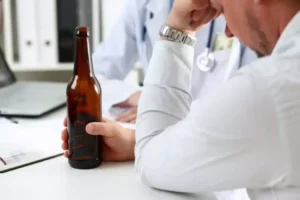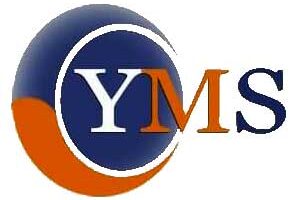
Binge drinking can trigger alcohol withdrawal seizures 6-72 hours after drinking stops. In a small number of people, binge drinking and alcohol withdrawal can cause status epilepticus, a potentially life-threatening condition where a person has prolonged seizure without regaining consciousness. Seizures can occur during withdrawal from alcohol in people with a history of heavy drinking or long-term alcohol abuse. In fact, as mentioned, alcohol withdrawal seizures are the most common cause of adult-onset seizures. Alcohol withdrawal seizures can occur 6-48 hours after the last drink, sometimes even 2-7 days after you stop alcohol consumption.
Alcohol consumption on unprovoked seizure and epilepsy: An updated meta-analysis
It is hypothesized that seizure activity propagates from the IC to deep layers of the superior colliculus (a major output of the IC) to trigger the wild running phase of the audiogenic seizure. The deep layers of the superior colliculus send projections directly to the spinal cord via the pontine reticular formation and the periaqueductal gray. The periaqueductal gray is thought to trigger clonic seizures, whereas the pontine reticular formation is implicated in the generation of the tonic phase of audiogenic seizures (18). Some evidence suggests that the IC plays a role in alcohol withdrawal seizures in humans, as it does in rodents.
Prevention of further drinking
Benzodiazepines-sparing protocols for the treatment of alcohol withdrawal (such as protocols using anticonvulsant medications) are particularly useful for treating alcohol withdrawal in outpatient settings. Administration of the CIWA-Ar relies on patient’s ability to communicate and should only be used if other etiologies of the patient’s condition have been excluded (e.g., delirium, dementia, acute psychosis, opioid withdrawal). If the patient is unable https://ecosoberhouse.com/ to communicate, the CIWA-Ar is not an appropriate assessment tool. Other assessment tools such as the Richmond Agitation-Sedation Scale (RASS) can be used to manage withdrawal in patients who are intubated or in the intensive care setting. Symptoms are generally mild during the first 12–24 hours of withdrawal but increase in intensity around the third day without alcohol. Heavy, long-term alcohol use and withdrawal from alcohol can lead to seizures.

Is Dependence the Same as Addiction?

Its symptoms generally appear within hours of stopping or even just lowering alcohol intake and, thus, BAC. The most common symptoms include tremor, craving for alcohol, insomnia, vivid dreams, anxiety, hypervigilance,2 agitation, irritability, loss of appetite (i.e., anorexia), nausea, vomiting, headache, and sweating. Even without treatment, most of these manifestations will usually resolve several hours to several days after their appearance. Abruptly stopping alcohol use after prolonged heavy drinking can trigger alcohol withdrawal seizures due to changes in brain chemistry. Light, infrequent drinking isn’t linked to seizures, but people who are regular or heavy alcohol users have an increased risk of alcoholic tremors or seizure activity.

Can alcohol trigger seizures in epilepsy?
In addition, in experiments with recombinant GABAA receptors, low concentrations of GABA were not found to affect the most abundant GABAA-receptor isoforms, which contain the γ2 subunit. Recently, however, it has been discovered that GABAA receptors containing the δ subunit, in particular α4β2δ (36) and α6β2δ (37) receptors, are exceptionally sensitive to ethanol. Because δ subunit–containing GABAA receptors have a highly specific regional distribution, the lack of uniformity in the experimental results is now understandable. Indeed, brain regions that express δ subunits, including the cerebellum, cortical areas, thalamic relay nuclei, and brainstem (38), are among those that are recognized to mediate the intoxicating effects of alcohol.
- While the results of these RCTs are contrasting, the off-label use of baclofen in the treatment of AUD has spread, especially in some European countries and in specific settings (e.g., in liver settings).
- People who experience severe withdrawal symptoms or DTs may require hospitalization or intensive care unit (ICU) treatment during alcohol.
- If you’re simply looking to speak to someone on the phone or chat online for more advice on your own or someone else’s drinking, get in touch with Drinkchat or Drinkline.
- More severe responses are seen in patients with prior episodes of withdrawal, a phenomenon known as “kindling” [26], or other underlying acute conditions.
- The dangerous withdrawal symptoms that are more likely through kindling include seizures, heart problems, and death.
Stage 3: 24 to 48 hours after last drink
- They should also make sure you attend your counseling appointments and visit the doctor regularly for any routine blood tests that may be ordered.
- About five percent of the patients who experience DT’s die from metabolic or cardiovascular complications, trauma, or infections (Victor and Adams 1953; Cutshall 1964).
- Alcohol withdrawal can include dangerous symptoms like seizures, which can come on suddenly and lead to serious consequences.
- Status epilepticus in the setting of ethanol withdrawal should be treated according to standard protocols, including the use of phenytoin.
- Figure Figure22 illustrates how to proceed in the clinical setting of suspected AWS to confirm the diagnosis and to start sufficient therapy.
Behavioral treatment programs are helpful for people who want to quit drinking. These programs involve working with a team of mental health professionals in a group and are alcohol withdrawal seizures dangerous individual setting. There are many support options available that can help guide you through alcohol withdrawal, as well as abstaining from alcohol after withdrawal.
MODERATE SYMPTOMS (CIWA-AR SCORE OF 10 TO 18 OR SAWS SCORE GREATER THAN
According to older research, alcohol consumption may have a causal relationship with seizures, and people who drink 200 g or more of alcohol daily may have up to a 20-fold increase in seizure risk. It is also possible to experience seizures as a result of alcohol withdrawal. This can happen after someone who has misused alcohol for a long time stops consuming it. In some cases, excessive alcohol consumption may lead people to miss meals or medication, which can also make seizures more likely in people with epilepsy.
- AWS is more common in adults, but children and teenagers who drink excessively may also experience the symptoms.
- Alcoholic hallucinosis is characterized by visual, auditory, or tactile hallucinations and is hallmarked by an intact sensorium, in contrast to delirium tremens (DTs) [32,33].
- In some cases, excessive alcohol consumption may lead people to miss meals or medication, which can also make seizures more likely in people with epilepsy.
Mild Symptoms

Initial symptoms include tremor, anxiety, insomnia, restlessness, and nausea. Particularly in mildly alcohol-dependent persons, these symptoms may comprise the entire syndrome and may subside without treatment after a few days. More serious withdrawal symptoms occur in approximately 10 percent of patients.


